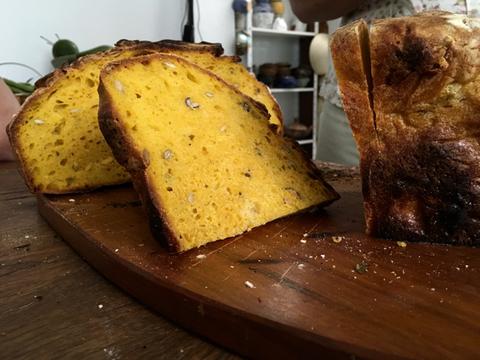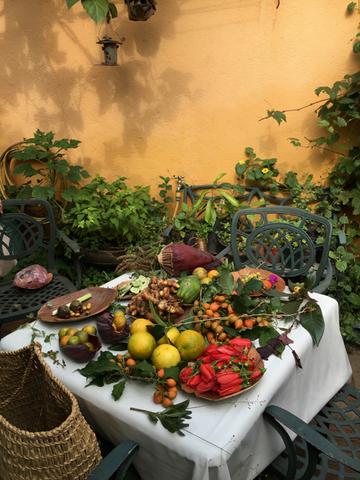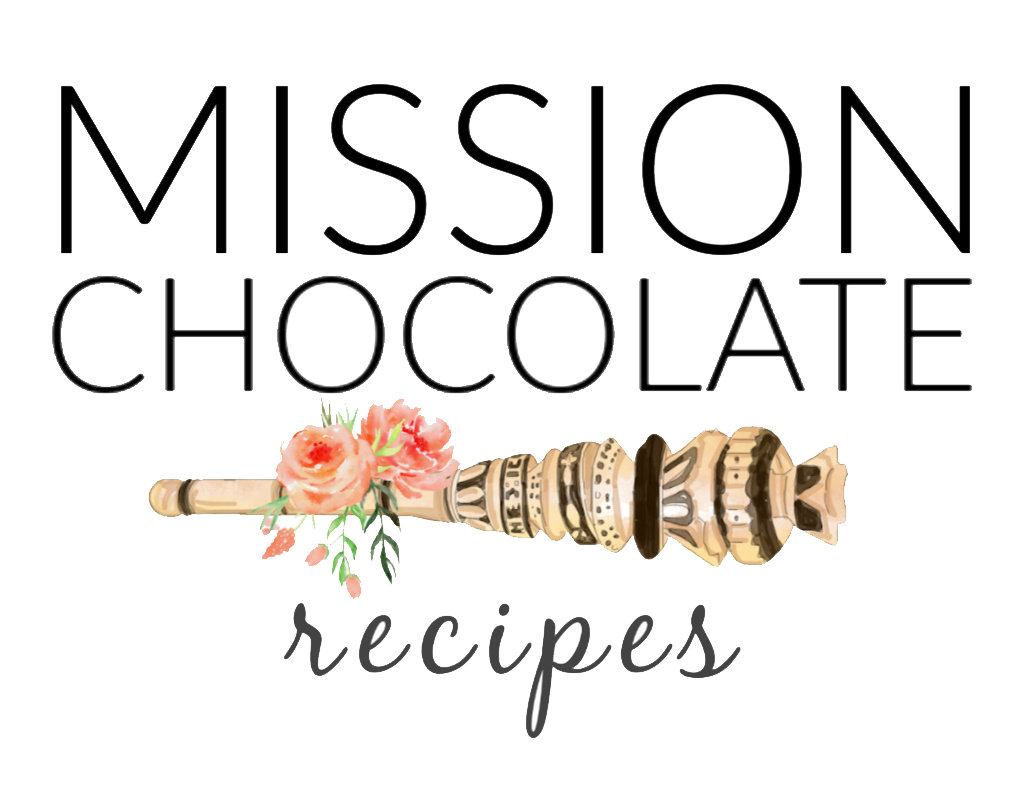Foraging Food in São Paulo, Brazil with Neide Rigo
Neide Rigo is a foraging tour guide/chef and has been a part of the natural, local, and healthy food movement in Brazil since many years ago -before it was cool and easy. When I landed in Brazil I immediately fell in love with her blog because it taught me about the foreign Brazilian ingredients that are now my staples. A few months ago her newsletter announced openings for her foraging tour and I jumped at the opportunity.
In my neighborhood of Itaim Bibi, I have seen many mango, banana, guava, coffee, pitanga, cacao, and rosemary plants. I didn’t think I was going to be surprised by the plants she would show us in her neighborhood half an hour away. But I was blown away. In this post I only share some of the things we saw; there are many more that I ate and forgot to take notes about. The tour begins in her home which looks like a kitchen museum, it’s magical.

After a short self guided tour of her kitchen, we were given beiju, a crepe made of dehydrated mandioca (yuca type of root) topped with flowers and tea from foraged flowers and leaves.
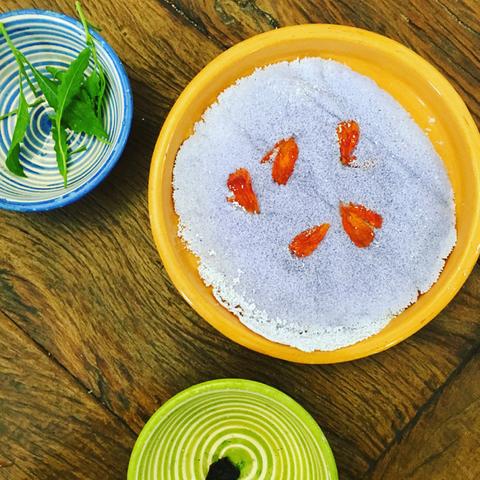
After introductions we grabbed our sacks and headed out into the neighborhood of Lapa in Sao Paulo. Below are some of the items we stopped to smell, take, taste and talk about.
Manjericão Anis- Basil, although it is named anis, I thought it has a strong licorice flavor. Native to India.

Jambu- native to Brazil, specifically the north/Amazon. It is a tasteless herb but it has an electric numbing sensation on your your tongue and lips. As soon as I bit into it, it reminded of the tucupi soup I had in the state of Pará. Jambu is a tipical ingredient in the famous soup and can be used medicinally to numb teeth and it considered a healthy herb with antioxidants. I have also had Jambu caipirinhas at Mócoto restaurant.
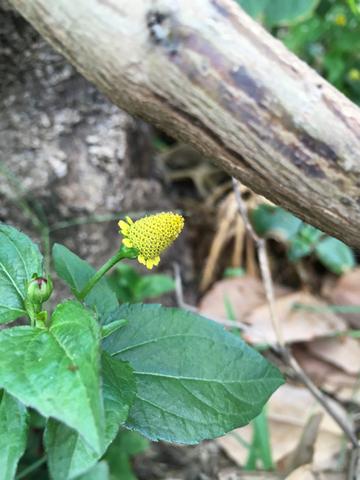
Dente de leão – Dandelion. Directly translates to ‘tooth of lion’. It is generally considered a weed in Brazil more-so than the USA. The roots can be boiled as a coffee replacement and and the yellow flower that grows from the center (missing in the plant) can be used to make jams.
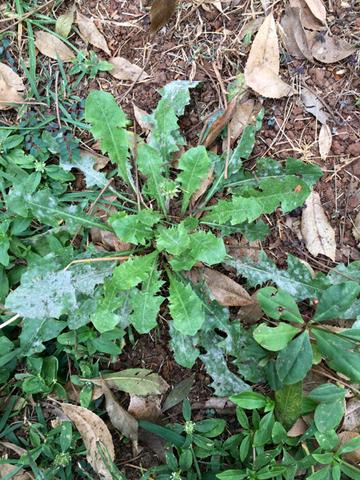
Aipo Silvestre- Wild celery. This herb has more of a cilantro flavor than celery; it is a healthy plant and can be used like any other herb.
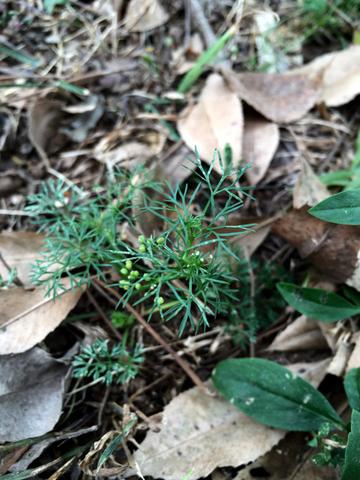
Orelha de Padre- Father’s Ear. This is similar to a snow pea – you can eat the entire thing when young but once it gets older, harder, darker – only the inside is edible. Inside there are beans that require cooking.
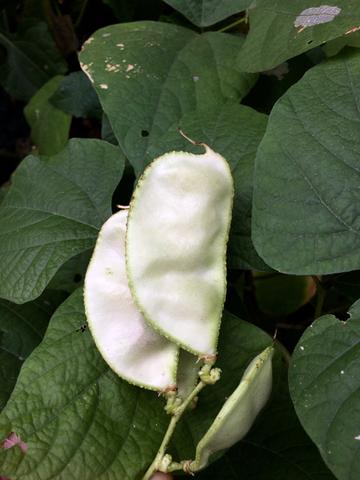

Abelha sem ferrão- Bee without stinger. You cannot have a healthy natural plant life without my favorite farm beasts: bees. Unlike American bees, these are darker, much smaller, native to Brazil and the male bees do not have a stinger. The female has stinger but it is used for reproduction. Neide has one in her home and in this neighborhood garden.
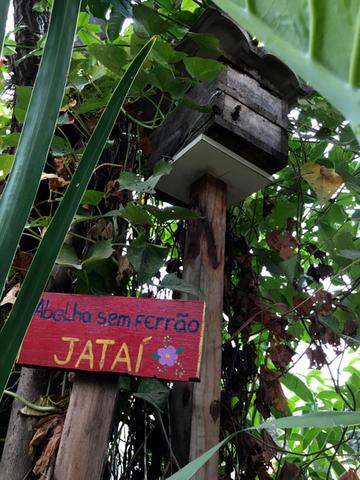
Batatinha – little potato. This is a ginger looking root that grows on vines and climbs up trees. It smells and tastes like a green russet potato.

Galangal- Galanga. We did not dig any of this up but it is a root just like ginger and turmeric. It is a must in Thai food and rarely used in Brazil.

Batata Doce -Sweet Potato. Neide said that last year they harvested 30 kilos from these plants which are planted in a space in her neighborhood that is unused. Great use of public space!
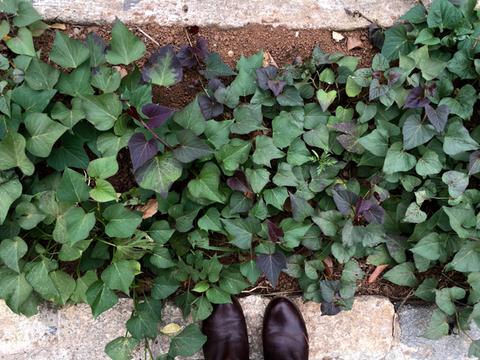
Tamarindo- Tamarind. I am not new to tamarind, I am a child of Mexican parents, who themselves grew up with Tamarind trees in their homes. They fed me tamarind water, candy, and ice creams my entire life. But I have never eaten the leaves! Neide suggested we eat the leaves of this very young plant and it was a light tamarind tang. It was incredible! The older/darker the leaves the more intense the flavor was, but the young light green leaves were very pleasant. Native to Africa.
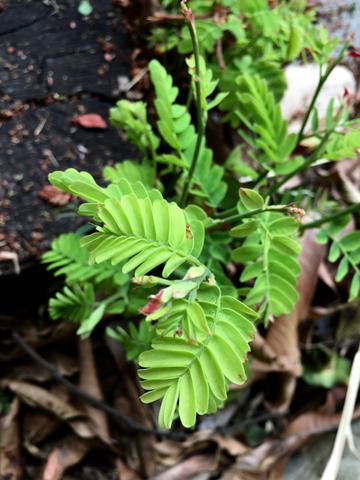
Mamão- Papaya. Native to the Americas, possibly Mexico. I have eaten this fruit when it is ripe many times with lime, salt and chili flakes. In Thai restaurants I have eaten green, uncooked, also with lime and chile flakes. But Neide took some of this green papaya and cooked it like any green vegetable. I was so astonished. I never assumed it could be cooked green. It was great, like a chayote (xuxu) or sturdier green squash (abobora paulista).

Café- Coffee. Brazil is a major exporter of coffee but that doesn’t mean there should be random coffee plants in Sao Paulo. That would be the equivalent to seeing grape vines or almond trees in San Francisco, California. There are yellow and red coffee beans and I have no idea what the difference is. Every time I run into one of these, I pick a few, eat the pericarp (sweet fruit) and spit out the coffee beans. They are everywhere in my neighborhood. Native to Ethiopia.
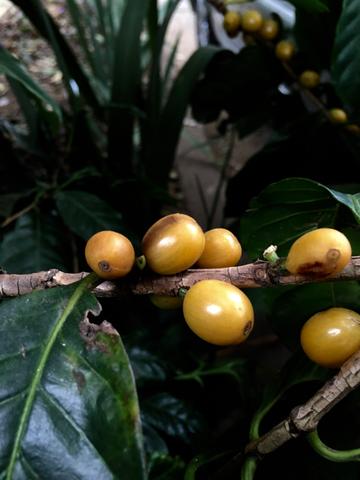
Bananas. These are too unripe to pick but we did take the banana heart, that thing that is at the end of these bananas (not shown). You can take the bananas off the stalk before they turn yellow but these are too small to take. With the banana heart, you have to boil in lemon and water twice before you prepare to eat. Bananas are native to India.

Epazote- I honestly thought this herb was only used in Mexico. It has a light herbal scent and can be cooked into meals or Neide uses as decorations on food. Native to Mexico and Central America.
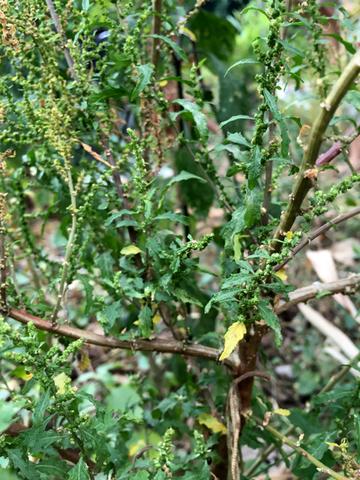
Malvavisco- (falso hibiscus)- False hibiscus. A beautiful red flower that is boiled with water to make a tea. It doesn’t open, it always remain like this. I see these everywhere at our ‘Central Park’, Ibirapuera. Native to USA and Mexico.
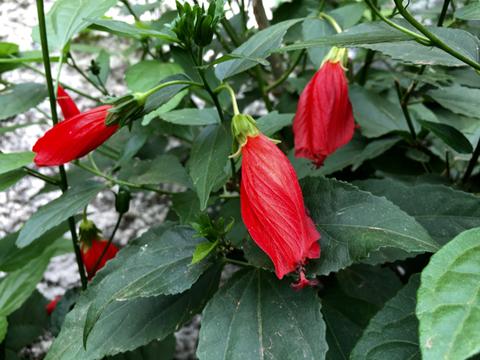
Cúrcuma- Turmeric. We found this wonder root the most. In the picture below you can see the leaves on the floor; that is how we knew where to dig. We followed the plant until we found where it was attached to the floor and dug into the dirt to pull out the root. You can do anything with this root; cook with it, use it to color food, or make it into tea. Native to India.

Abacate – Avocado. We were not able to harvest any avocado, they were too high in the trees. The ones on the floor were smashed and mostly eaten by birds. Brazilian avocados are not like Mexican avocados. In Brazil, avocados are large, almost like a football, and very watery. They are mostly used to make milkshakes or sweet things, not used in savory dishes. In the USA we call this Fuerte Avocado (although they don’t grow this big), the one we normally consume for guacamole is the Haas avocado, which was actually bred in Los Angeles, California. Native to Mexico.

Pimenta rosa -Pink pepper. This is not pink peppercorn but you can treat it like peppercorn. This is native to Brazil and has a sweet, light, spicy, floral taste.
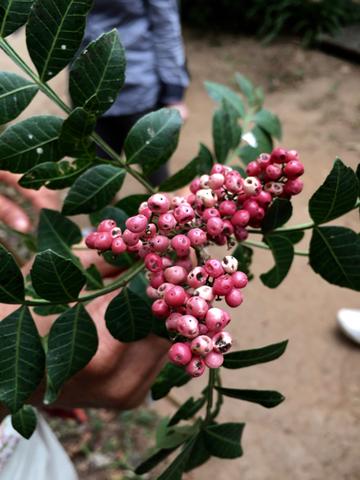
Lingua de vaca- Cow’s tongue. This plant is native to Brazil and is used for almost any home-made remedy. It can also be eaten green in a salad.

Mini-pepino – Creeping Cucumber. I love Neide’s hands here- authentic farmer. These baby cucumbers grow on vines and can be eaten as is. It tastes like a cucumber but the leaves smell like red watermelon! Native to the Americas.

Nopal- native to Mexico. I have eaten these my entire life but they are not part of the Brazilian diet. I brought a lot of these home! After I cleaned them, I grilled and topped with salt and lemon -heaven. They don’t sell these anywhere so foraging is my only option. Native Mexico.

Caferana- I could not find any info on this fruit. It is the size of a cherry and also has a large seed in the center. But the texture is nothing like a cherry. The texture is like a boiled yam. It begins to taste like a yam then ends with peanut notes. It is such a strange yet pleasant experience.
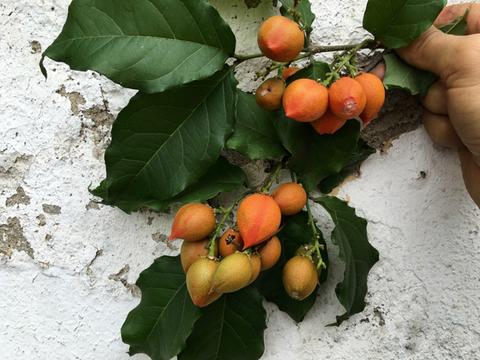
This is what was inside of the banana heart that we brought back; technically they are flowers but they do look like mini bananas.
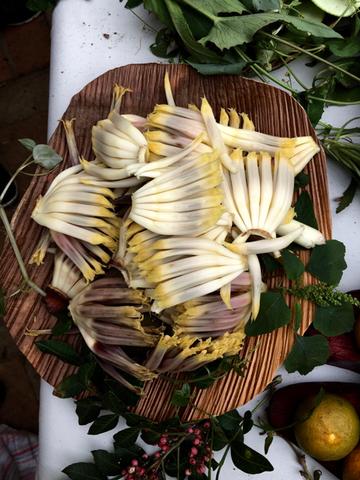
And then we brought everything back to Neide’s house where we went over all of our findings and had and amazing lunch.
You have to be on Neide’s newsletter to find out about the tours, I was on the waitlist for 1 month; she only has them 1-2 times per month. Mine began at 9am on a Saturday and ended at 4pm. If you come to Sao Paulo and have the time, please take her tour. It is definitely worth it if you are a foodie plant lover.
